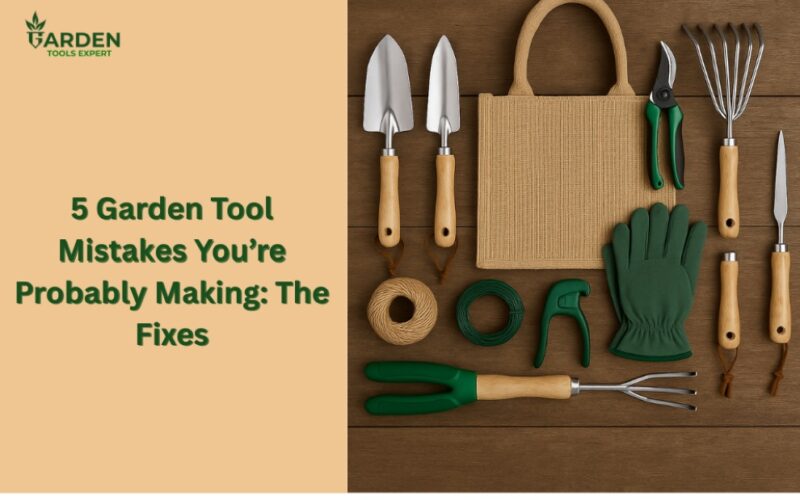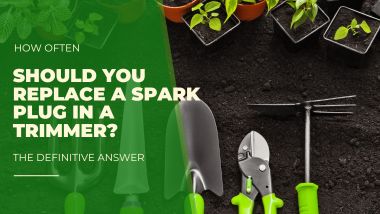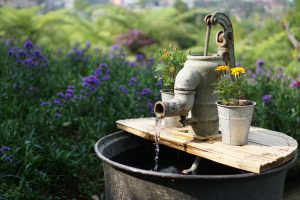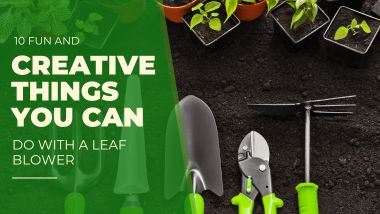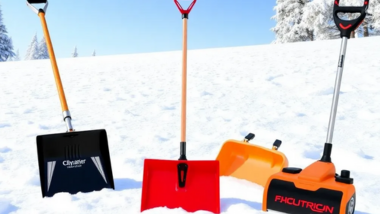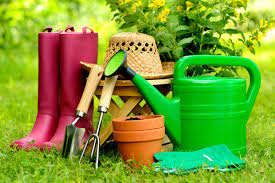You’ve got the plants, you’ve got the passion. But if your tools aren’t working for you, they might be working against you.
Let’s be honest, gardening isn’t just about sunshine and green thumbs. It’s also about the gear you use and whether you’re using it right. It delves deeper into gardening right and meeting the standards for effective and efficient gardening.
Garden tool mistakes are habits that creep up on even the most experienced gardeners. Though the effects aren’t immediate, your garden’s health and yours will eventually feel the strain.
So here are 5 garden tool mistakes you’re probably making and their fixes.
1. Using the Wrong Tool for the Task
Using the wrong tool for the job is one of the garden tool mistakes that can slow you down, damage your plants, and wear you out faster than you think. It’s like trying to hammer a nail with a wrench; it might work, but it’ll be messy, frustrating, and probably leave a mark where you don’t want one.
In the garden, that might mean using pruning shears on thick branches (and ruining the blades) or trying to dig with a hand trowel when you need a spade.
Not only does this put unnecessary strain on your body, but it can also damage roots, stems, or soil structure.
One of the best habits any gardener can develop is learning which tool is right for each task and investing time in using it correctly.
Mattock vs. Pickaxe: What’s the Difference and When to Use Each is a helpful guide that breaks down which tool suits what kind of digging or breaking job.
The Fix: Make sure you’ve got the right tool for each job. You don’t need a shed full of gear, but you do need tools designed for the task at hand. It’ll save your time, your soil, and your sanity
2. Neglecting to Sharpen Your Blades
When your pruners, shears, or blades lose their edge, they create rough, uneven cuts instead of clean ones. These ragged wounds don’t heal as easily, leaving your plants vulnerable to pests, rot, and disease.
Using blunt tools can be overly frustrating. Sharpening your tools gives good results for your time and efforts and, in general, makes your garden flourish and gives a wonderful experience.
Sharpening your blade is crucial for both safety and performance. A sharp blade requires less force to cut, reducing the risk of slips and injuries, while also enhancing the precision and speed of cuts.
The subtle details in gardening are often ignored, yet they play a big role in sustaining healthy plants. Regularly sharpening your tools isn’t just about efficiency, it’s about protecting the life of your garden.
The Fix: Sharpen blades seasonally. A sharp bypass pruner, for instance, should slice through stems like scissors through paper. If it doesn’t, it’s time to sharpen or replace it.
3. Improper Storage After Use
Tools exposed to the elements (like rain, sun, or damp soil) are far more likely to rust, dull, or break down over time. Wood handles crack, blades corrode, and even plastic parts can warp when left outside or tossed in a cluttered shed.
More importantly, dirty tools can carry soil-borne diseases from one plant to another, especially if you store them without cleaning off the debris. That grime might not look dangerous, but it could be holding onto harmful bacteria, fungi, or pests.
Storage in general is a very essential practice; hence, incorporating it into your gardening will save you from a lot of frustration. Don’t let your own garden tool storage mistake frustrate you when you can work it out for a smooth garden experience.
The Fix: After each use, ensure that you rinse off the soil, dry thoroughly, and store tools in a dry, covered area. Hanging them up helps prevent damage and keeps your workspace tidy.
4. Forgetting to Sanitize Between Plants And After Use
Sanitizing your garden tools is a simple yet essential practice that helps you control the spread of plant pests, diseases, and fungi between your plants. If you are not sanitizing your garden tools, then you are making a garden tool mistake.
Diseases like blight and powdery mildew can spread from plant to plant via your pruners, loppers, or shears. It’s like using the same toothbrush for the whole family.
Just as healthy soil and sunlight are key ingredients for a thriving garden, clean tools are essential.
The Fix: Wipe down your cutting tools with rubbing alcohol or a diluted bleach solution when moving from one plant to another, especially if you suspect any issues.
5. Ignoring Ergonomics and Your Comfort
Gardening should feel good and not leave you sore for days. Garden tool mistakes are avoidable, and so never let them discourage you.
Ignoring ergonomics and your comfort when using garden tools is a garden tool mistake that can lead to more than just a frustrating gardening experience; it can result in long-term strain, fatigue, and even injury.
The ergonomics of digging tools can easily be ignored, but that can be extremely disturbing to your body and health in general.
Tools that are too heavy, poorly balanced, or designed without consideration for hand and body mechanics can cause unnecessary stress on your wrists, back, and joints. A gardener who gardens without considering ergonomics risks getting complicated health conditions.
For example, a shovel with the wrong handle length may force you to bend awkwardly, while pruners without cushioned grips can cause hand cramps or blisters.
The shovel is one of the everyday tools of a gardener; hence, you can explore the essential shovel you may need in your home for gardening, exploring with ergonomics and comfort in mind.
Choosing ergonomically designed tools that fit your body and gardening style makes tasks easier and more enjoyable and, to a great extent, helps you garden longer and reduce discomfort.
The Fix: Choose tools that match your strength and reach. Garden ergonomic designs in general aren’t a luxury; they’re essential for anyone who gardens regularly. Quality brands carefully engineer tools with your comfort in mind. If they are not, then they are making a garden tool mistake you should not succumb to.
Conclusion
Your garden reflects the care you put into it, and that care starts with your tools. By avoiding these common garden tool mistakes, you’re not just protecting your investment; you’re making every dig, cut, and sweep more effective.
Need help exploring garden tool basics? Reach out to our experts or explore our curated collection.

